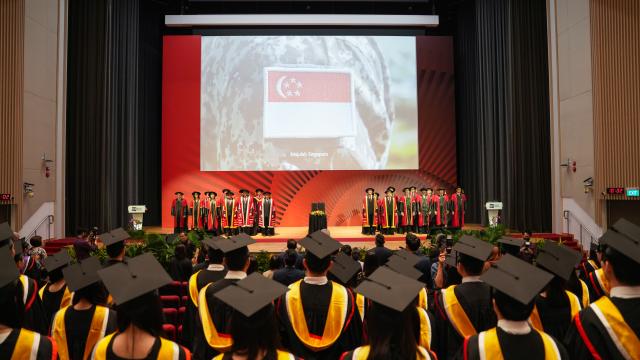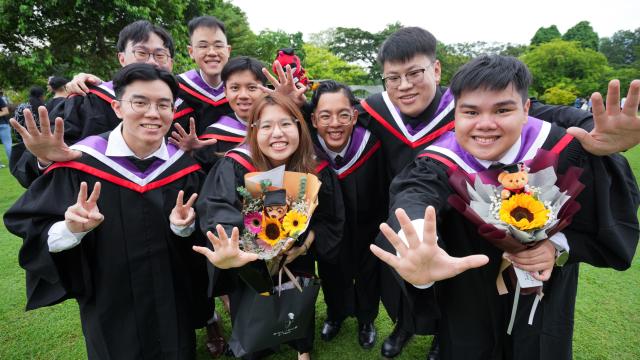- The Living Lab Network integrates live campus-wide systems to deliver real-time data for hands-on learning, and transforms SIT Punggol Campus into a live testbed for applied research
- Announced at the Applied Learning Conference 2025, SIT’s Living Lab Network and the conference’s focus on Competency-Based Education reflect a unified push toward building a future-ready, skills-based workforce

SINGAPORE, 2 July 2025 – The Singapore Institute of Technology (SIT) is developing a Living Lab Network (LLN) to elevate applied learning and applied research by enabling access to live campus-wide systems and the data they generate at its new Punggol Campus. Featuring a multi-layered access model, the LLN will support (i) students undertaking hands-on coursework and (ii) industry collaborators trialling emerging technologies such as digital twinning, smart building systems, energy optimisation and cybersecurity tools. The LLN was announced at the University’s fifth Applied Learning Conference (ALC), which was held on 2 and 3 July 2025 at its Punggol Campus for the first time, and graced by Guest-of-Honour Dr Janil Puthucheary, Senior Minister of State, Ministry of Education and Ministry of Sustainability and the Environment.

Guest-of-Honour Dr Janil Puthucheary delivering his opening address. (SIT Photo)
Scheduled for completion by end-2025, the LLN is a key enabler of SIT’s Campus as a Living Lab (CaLL) initiative, embedding experiential learning and innovation throughout the campus. The LLN will be linked to more than 20,000 Internet-of-Things (IoT) sensors attached to key systems across SIT’s Punggol Campus, offering a flexible, connected environment where students, faculty, researchers and industry partners can learn, co-develop, test and scale digital and data-driven solutions.
Real-Time Campus-Wide Systems Supporting Learning and Innovation
The LLN connects critical campus-wide systems and transforms SIT’s Punggol Campus into a dynamic digital learning space. Key systems include:
- Integrated Building Management System (IBMS): Real-time data from building systems is fed into the IBMS. This gives students opportunities to monitor and understand campus infrastructure operations, such as how the system adjusts environmental conditions based on occupancy and usage patterns.
- Multi-Energy Micro-Grid (MEMG), co-developed with SP Group: Southeast Asia’s first campus-scale MEMG features the integration of solar panels and battery energy storage. It enables hands-on projects in electrical power engineering, where students can study the integration of renewable energy, battery energy storage systems, and grid stability in a real-world setting.
- District Cooling System (DCS), co-developed with ENGIE: This system provides chilled water for campus-wide air-conditioning. It enables students to gain exposure to large-scale sustainable cooling technologies, and access to real-time operational data including performance measurement and system troubleshooting.
The live data from these campus-wide systems allows students to develop data modelling capabilities for visualisation and performance analysis. They also enable the development of digital twins that facilitate experimentation and innovation. For example, engineering students now have access to data from the MEMG, enabling them to better understand real-world power system operations and behaviours. Through assignments and integrative projects, learners design solar photovoltaic (PV) systems, optimise energy storage solutions, and implement smart grid strategies. Actual energy output of the system can then be compared against expected output from digital models to evaluate system efficiency, detect underperformance, or identify mismatch losses and degradation in PV modules.
In addition, the LLN plays a pivotal role in strengthening the University’s cybersecurity education by enabling students to engage with realistic, hands-on scenarios that go beyond the limitations of conventional laboratory or small-scale setups. Students taking courses in digital forensics can use the LLN to simulate multi-host compromises, malware deployment or anti-forensic behaviours. The LLN also supports advanced cyber-physical security exercises, such as red-blue team simulations and simulated attacks on critical infrastructure; activities that mirror national-level operations.
Applied Research: Industry Collaboration and Innovation Testbed
SIT’s LLN also provides industry and academic partners with a plug-and-play “testbed-as-a-service” to validate products and solutions in a real-life environment. For example, new cybersecurity technologies developed for securing both OT (Operational Technologies such as building systems) and IT systems can be validated in a real-world scenario leveraging the LLN so as to shorten the to-market time for commercialisation and deployment. Through partners like the Association of Information Security Professionals (AiSP), initiatives such as the ASEAN Bug Bounty Programme not only offer learning opportunities for students, but at the same time, help businesses test and enhance the security of their real-world systems. SIT is also working with Hitachi to explore how the LLN can support energy optimisation within a district, accelerating renewable energy integration for greener buildings including data centres.
“The Living Lab Network will be a cornerstone of SIT’s applied learning and applied research ecosystem," said SIT President Professor Chua Kee Chaing. "It reflects our dedication to enhancing the learning experiences of our students by providing them access to campus-scale systems and the real-time data they generate. Solving real-world problems will empower our students to think more critically and be better prepared to contribute meaningfully to industry from day one. For companies, the LLN provides a controlled environment to trial and validate new technologies."
Following its Call for Collaboration (CfC), SIT has established a partnership with NEC Asia Pacific (NEC APAC) for the infrastructure development of the LLN. This partnership ensures that the design and implementation of the LLN would support both talent development and applied research.
“Partnering with SIT on the Living Lab Network allows us to co-create a dynamic learning environment where innovation meets application,” said Yeo Jack Ming, Vice President, NEC APAC. “By integrating NEC APAC’s technological expertise with SIT’s applied learning ecosystem, we’re building more than just infrastructure, but also investing in people, ideas, and the long-term development of resilient and future-ready talent for the workforce.”
ALC 2025: Competency-Based Education (CBE) as the Foundation of a Skills-Ready Workforce
The LLN exemplifies SIT’s commitment to Competency-Based Education (CBE) by providing students with authentic, industry-relevant learning experiences that cultivate practical skills and competencies. Through collaborative projects with partners like NEC, SIT is preparing a future-ready workforce equipped to meet evolving industry demands— a core focus at the ALC 2025.
Themed “Navigating the Future: Competency-Based Education for a Skills-Ready Workforce,” the ALC 2025 will feature more than 30 speakers from academia and industry who will engage in a series of plenary speeches, panel discussions, and interactive sessions. As part of the programme, SIT President Professor Chua Kee Chaing will participate in an insightful fireside chat with Professor Martin Betts, CEO and Co-founder of HEDx — a global network of higher education providers and partners committed to transforming the sector. Together, they will reflect on the University’s first decade of impact and reinforce its ongoing commitment to delivering CBE offerings aligned with industry demands.
SIT President Professor Chua Kee Chaing and Professor Martin Betts, CEO and Co-founder of HEDx, participating in an insightful fireside chat. (SIT Photo)
This year’s ALC is also held in conjunction with the National Technology Enhanced Learning Conference (NTEL) 2025 on 4 July 2025. Organised by SIT and supported by the Ministry of Education, NTEL 2025 will discuss the emerging role that AI plays in education. More than 1,100 delegates are expected to attend the three-day event. More information on the conferences, speakers and synopses of talks are available at: https://www.alc.sg/ and https://www.ntel2025.sg/.
About Singapore Institute of Technology
As the university for industry and Singapore's first university of applied learning, the Singapore Institute of Technology (SIT) offers industry-relevant degree programmes that prepare its graduates to be work- and future-ready professionals. Its mission is to maximise the potential of its learners and to innovate with industry, through an integrated applied learning and research approach, so as to contribute to the economy and society.
The University’s unique pedagogy integrates work and study, embracing authentic learning in a real-world environment through collaborations with key strategic partners. Its focus on applied research with business impact is aimed at helping industry innovate and grow. SIT’s new centralised campus within the larger Punggol Digital District features a vibrant learning environment where academia and industry are tightly integrated with the community.
For more information, visit www.SingaporeTech.edu.sg
For more information about the LLN, click here:
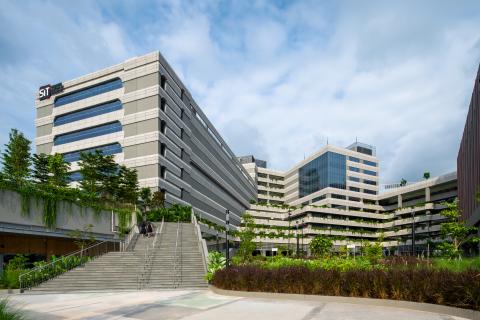
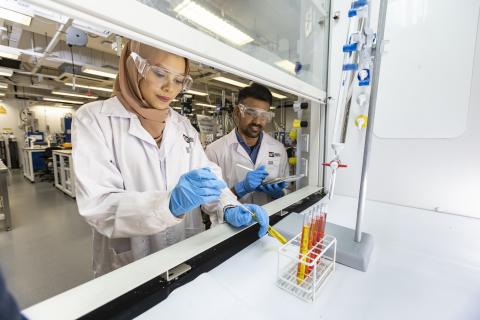
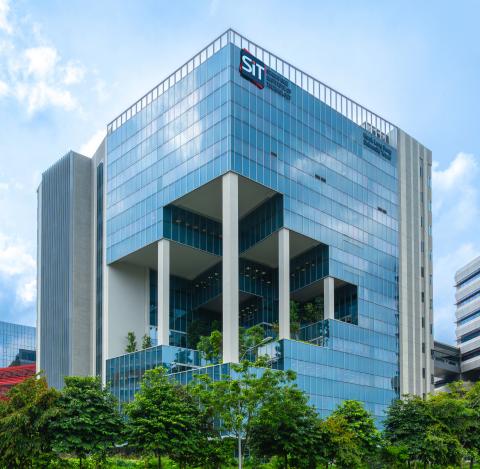
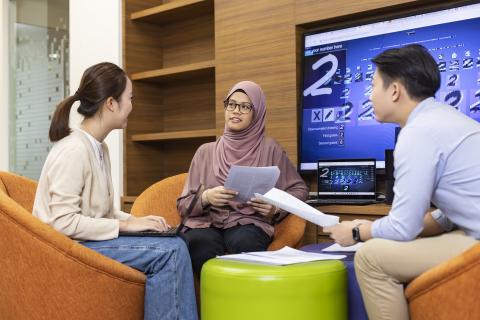


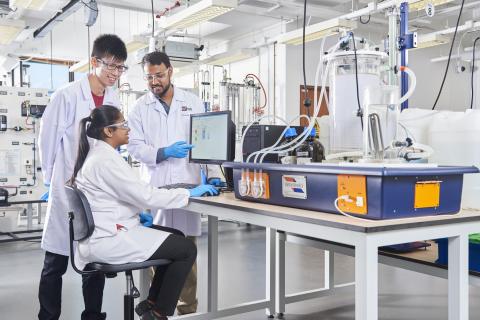
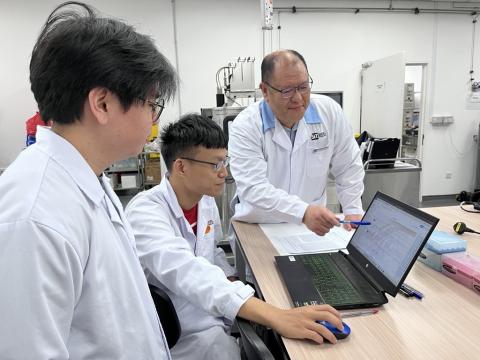


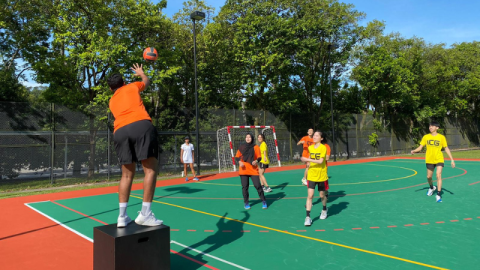




![[FA] SIT One SITizen Alumni Initiative_Web banner_1244px x 688px.jpg](/sites/default/files/2024-12/%5BFA%5D%20%20SIT%20One%20SITizen%20Alumni%20Initiative_Web%20banner_1244px%20x%20688px.jpg)
